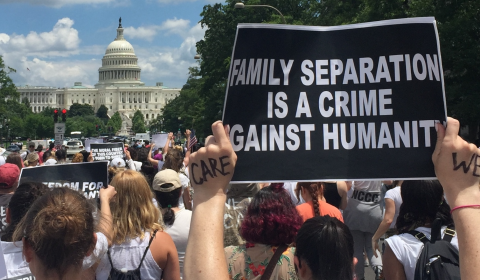The decision aims to tackle cases of harassment outside clinics across the country.
For years, anti-abortion protesters in England and Wales have employed tactics ranging from the passive-aggressive to the blatantly invasive in an effort to sway women from terminating pregnancies.
Come the end of October, however, this may no longer be the case.
The government has announced plans to introduce 150-metre buffer zones around abortion clinics, marking a watershed moment for reproductive rights in England and Wales. As of 31st October 2024, it will be illegal to harass, distress, or even stage a protest within these newly designated ‘safe spaces’ around abortion services.
For those unwilling to comply with the boundaries, punishment will be an unlimited fine.
Though the idea of protection zones isn’t exactly revolutionary (Australia, Canada, and parts of the US have had them for years), their arrival in England and Wales is significant for its timing.
Amid fraught debates over abortion access in the US, and recent crackdowns on protest rights within the UK, an increasingly complex dance between personal liberty and public intrusion has been playing out internationally.
While some may welcome the introduction of buffer zones, others are likely to see them as another strike against free expression and public space.
The legislation comes in response to widespread reports of harassment at clinics across the UK. In 2022, the British Pregnancy Advisory Service (BPAS) revealed that harassment had been recorded at over 50 abortion clinics, with incidents ranging from overtly aggressive behaviour to subtle but insidious attempts at ‘counselling’ women as they walked in.
According to reports, around 15 BPAS clinics, which help more than 45,000 women a year, experienced protests outside in the five months since the Public Order Act – which includes legislation on buffer zones – became law in May.
Incidents included a man staging a protest in the waiting room of a clinic; 30 activists standing outside for several hours, ‘causing anxiety and stress to women inside’; and protesters displaying graphic images of foetuses and verses from the Bible outside a hospital.
Protesters have long argued their right to free speech. But what constitutes harassment, particularly in sensitive cases like these, is not merely a matter of physical interference.
It’s no wonder, then, that the push for buffer zones has been bolstered by stories of women affected by these incidents.
Heidi Stewart, head of BPAS, said implementation of the zones ‘can’t come soon enough’.




















